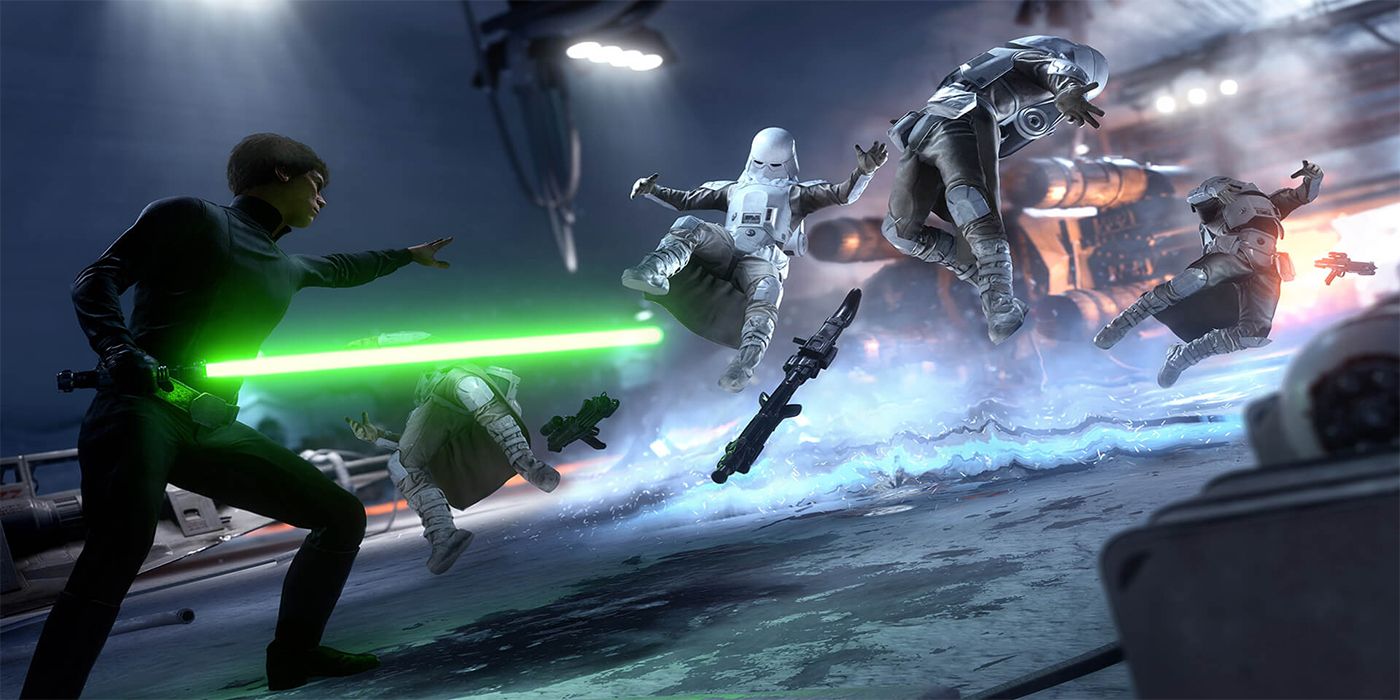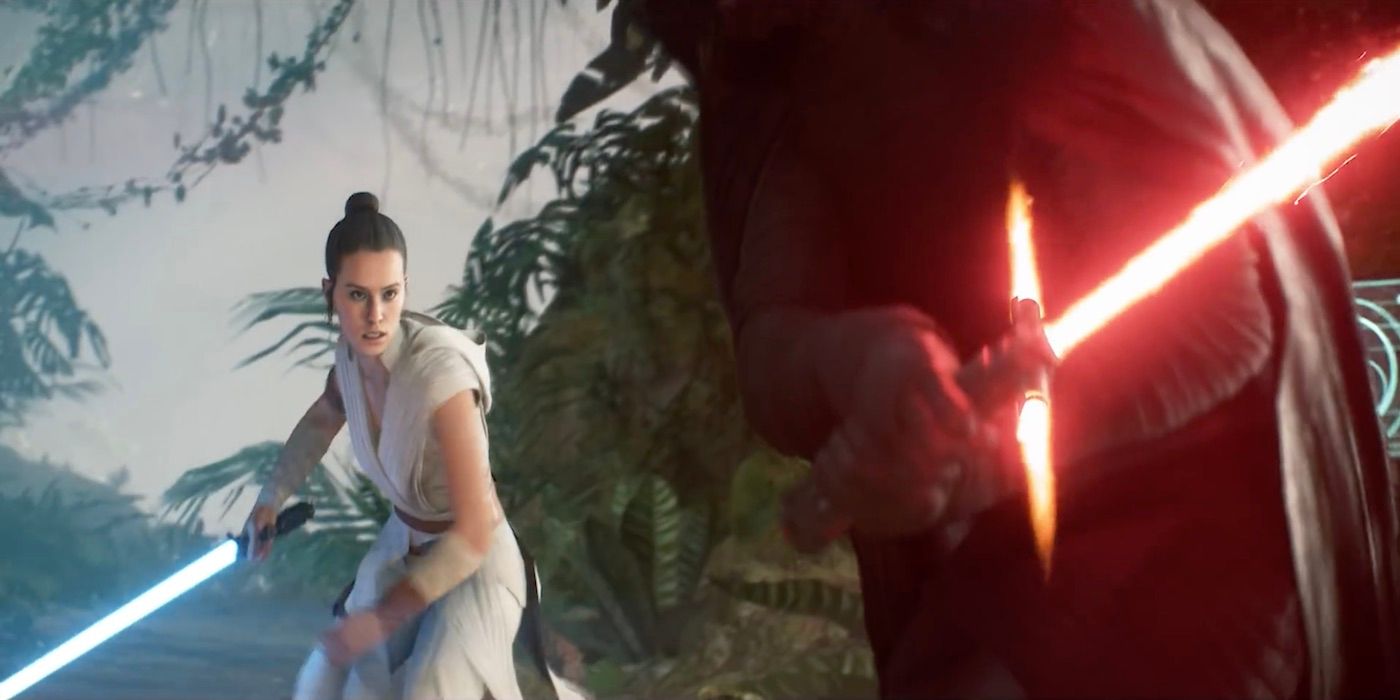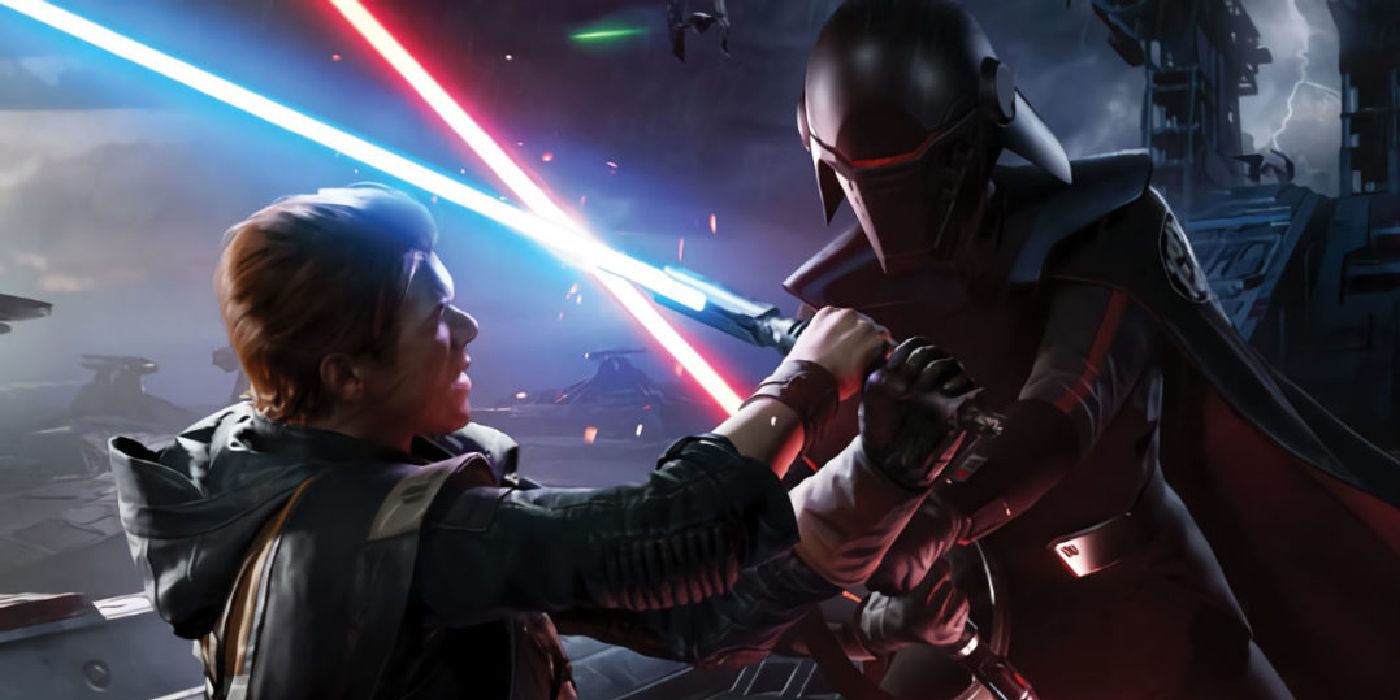Star Wars Jedi: Fallen Order has been in the news a lot lately. It was one of gaming's best surprises in 2019, with the game translating Dark Souls mechanics into a surprisingly approachable format. Of course, that doesn't mean that it has no quirks. It raises some interesting questions about how the Force works, which, as it turns out, is a wildly inconsistent thing.
In Jedi: Fallen Order, Cal regenerates his Force powers by successfully attacking enemies. In a way, it seems like the exact opposite method that a Jedi would use to reconnect themselves with the Force. The Jedi are, of course, a sort of warrior-monk, but doing damage to another living being hardly seems like a way to grow a greater connection to the force that binds all living beings together. This would make some sense for a Dark Side user, as that connection is grown more from hatred than anything else, so it makes sense that that would be the case for a Sith.
That's not the major issue here, though. The problem is just how frequently the rules of the Force change between games without explanation. As a game mechanic, it's understandable that different games portray the Force in different ways, but for the Star Wars universe as a whole, it makes significantly less sense. There's a broad range of Star Wars video games that have been released in the franchise's 40-year history, and very few of them have overlapping rules for Jedi and the Force.
So, what consistencies can players expect to find in most games? Using the Force is, indeed, strenuous. Using it too much will drain even the most powerful Jedi's stamina, leaving them relatively vulnerable to blaster fire and large groups of enemies. This is seen in pretty much every Star Wars game to date, from Jedi: Fallen Order to Knights of The Old Republic. The Force, much like a mana bar in the countless fantasy games out there, does drain and regenerate. Learning a new skill also comes in a moment of relative spontaneity it seems, at least for those that have been able to use that ability in the past. This is the same for Cal Kestis, Revan, and many other Star Wars protagonists. Beyond that, there's not much consistency about the mystical Force.
The most obvious explanation is that every Jedi's connection to the Force is a little bit different. Characters that are more Force-sensitive or better trained are capable of more impressive feats. That would explain Cal's struggle, as he was a simple padawan during Order 66. But look at a character like Galen Marek, otherwise known as Starkiller, from The Force Unleashed. At one point, players see the character rip a Star Destroyer from the sky, only to shrug it off with relative ease. However, at pretty much any other point in the game, the character is fairly limited as to which Force abilities he can use for longer than a few moments.
None of this is to say that the inconsistencies of the Force are enough to kill an otherwise great experience, but it is something that can lead to a rabbit-hole of trying to find other inconsistencies within the Star Wars universe. The Star Wars license has changed hands a few times, so it does make sense that not everything adds up. Since Disney took over, the Star Wars canon has been a bit of a mess, as a large swathe of the Expanded universe was axed. Of course, Disney has re-canonized figures like Darth Revan, so it may just take some time for everything else fans love to be reintroduced to the mythos.
Star Wars may begin to try and make the rules of the Force more consistent in the future. Rise of Skywalker has implications for the future of Star Wars games on its own, and it seems like other Star Wars media will also create more rules for games to follow. Hopefully, those rules add up to a more consistent Force. Jedi: Fallen Order is one of the few games that show what it's like to train as a Jedi, so it does provide one of the best explanations of how a connection to the Force is made. To better establish those rules, a game that explores the life of a Jedi from beginning to end would help make the Force just a bit less mysterious.
Undoubtedly, there will be more Star Wars games in the future. It's one of the most popular entertainment franchises in the world and Disney surely wouldn't let that go to waste, especially now that there will be a hiatus for Star Wars films. How the mystery of the Force will be unraveled after that is still a big question. One of the most interesting aspects of Star Wars is the general mysticism inherent in the Force, and there's a delicate line to walk between over-explaining it and helping the rules seem at least somewhat regulated.
It'll be exciting to see how the future of Star Wars games start to take shape. Jedi: Fallen Order was the best Star Wars story of 2019, and Battlefront 2 has had an impressive redemption story. Hopefully, modern Star Wars games will manage to maintain the level of quality of what's currently being produced. Or, at the very least, craft games that expand on the lore fans already know and love.



